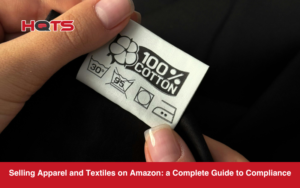When you’re searching for packaging materials for your products, you may think of how visually pleasing it looks to the consumer and how it will store the food over time. But one aspect that is often forgotten is that the package itself must meet safety standards set by regulatory authorities.
The Food and Drug Administration (FDA) has strict regulations in place to safeguard consumers in the United States against hazardous chemicals that may be present in food contact packaging materials.
In this quick guide, we’ll cover the basics of food contact materials testing that you need to know to ensure your packaging is safe and compliant with FDA standards.
What Are Food Contact Materials?
To ensure that nothing harmful ends up in food, the FDA requires a thorough approval process for new food contact materials. Here’s a quick overview of what you need to know about FDA compliance for food contact materials:
- Packaging: Items such as plastic wraps, aluminum foils, cardboard boxes, and glass jars.
- Containers: These are used for storing and transporting food. Examples include plastic containers, metal cans, and glass bottles.
- Utensils: Everyday items like forks, knives, spoons, and cooking tools fall into this category.
- Machinery: Equipment used in food processing, such as mixers, blenders, and conveyor belts, also qualifies as FCMs.
FDA Regulations and Standards at a Glance
The FDA ensures that nothing harmful ends up in your food by requiring an approval process for new food contact materials. Before a new substance can be used, manufacturers must submit a Food Contact Notification (FCN) to the FDA. The FDA reviews this information to ensure safety, and only after approval can the substance be used in food contact materials.
Here’s a quick look at some of the key elements:
- Code of Federal Regulations (CFR) Title 21: This is where you’ll find the detailed safety standards and testing requirements for various food contact materials. It covers everything from the types of materials that are approved to the substances that can be used and how these materials should be used safely.
- Food Contact Substance Notifications (FCSs): If a manufacturer wants to use a new substance in food contact materials, they need to let the FDA know first. This involves sending detailed safety information, including the substance’s chemical makeup, how it’s intended to be used, and any potential health risks. This way, the FDA can review the data and ensure that the substance is safe for its intended purpose.
Steps for FDA Food Contact Materials Testing
Achieving FDA compliance for food contact materials involves several critical steps to ensure that your packaging meets all regulatory requirements. Here’s a straightforward guide to the process:
1. Prepare Documentation
The first step is to gather and prepare all necessary documentation, including:
- Material Specifications: Detailed descriptions of the materials used, including their composition and physical properties.
- Prior Test Results: Any previous testing data that might be relevant to the current evaluation.
- Safety Data Sheets: Documents that provide detailed information about the chemical properties and potential hazards of the materials.
Make sure all these records are up-to-date and accurately reflect any changes in your material formulations or manufacturing processes.
2. Collect Sample
Next, you’ll need to collect samples that truly represent the food contact materials you’re testing. This ensures the test results apply to the entire batch. Handle and prepare these samples carefully to avoid contamination. Use clean, non-reactive containers and tools to keep everything pure.
3. Select Accredited Testing Laboratory
Send the collected samples to laboratories accredited by recognised bodies, such as those like HQTS accredited testing laboratory with ISO/IEC 17025 accreditation. This accreditation ensures that the laboratory meets international standards for technical competence and quality management, providing confidence in the reliability and accuracy of the test results, and that they follow FDA-approved testing methods and protocols.
5. Selection of Testing Methods
The laboratory will choose the testing methods based on the type of material and its intended use. Common tests include migration assessments, which check if harmful substances can transfer from the material into food, and chemical analyses to identify any potentially hazardous substances. But different materials might need specific tests. For example, plastics might need tests for plasticisers, while metals might require heavy metal analysis.
6. Interpreting Results
After testing, the lab will provide a detailed report. Review this report to check for any harmful substances and compare them against FDA safety limits for food contact materials. Materials exceeding allowable limits are deemed non-compliant. If any substances exceed the allowable limits, the material is considered non-compliant.

Example of a food contact materials testing report by HQTS.

Example of a food contact materials testing report by HQTS.
7. Taking Action
If the test results show non-compliance, you’ll need to take corrective measures, such as adjusting material formulations or refining manufacturing processes. After making the necessary changes, re-test the materials to ensure they now comply with FDA regulations. Once they are deemed compliant, you can start the process of submitting a Food Contact Notification (FCN) to the FDA for approval. This involves providing detailed information about the substance’s chemical composition, intended use, and safety data to demonstrate that it meets all regulatory requirements.
Conclusion: FDA Food Contact Materials Testing
When choosing packaging for your products, it’s not just about how it looks or how well it works. It’s also important making sure it meets FDA safety standards to keep consumers safe from potential hazards. This guide has walked you through the basics of FDA food contact materials testing, including what qualifies as food contact materials, key regulatory requirements, and the steps involved in testing.
Navigating FDA compliance on your own can be overwhelming. At HQTS, we have years of experience helping businesses like yours meet FDA regulations and testing their products in our accredited lab. Don’t hesitate to reach out to us today for a free consultation.





